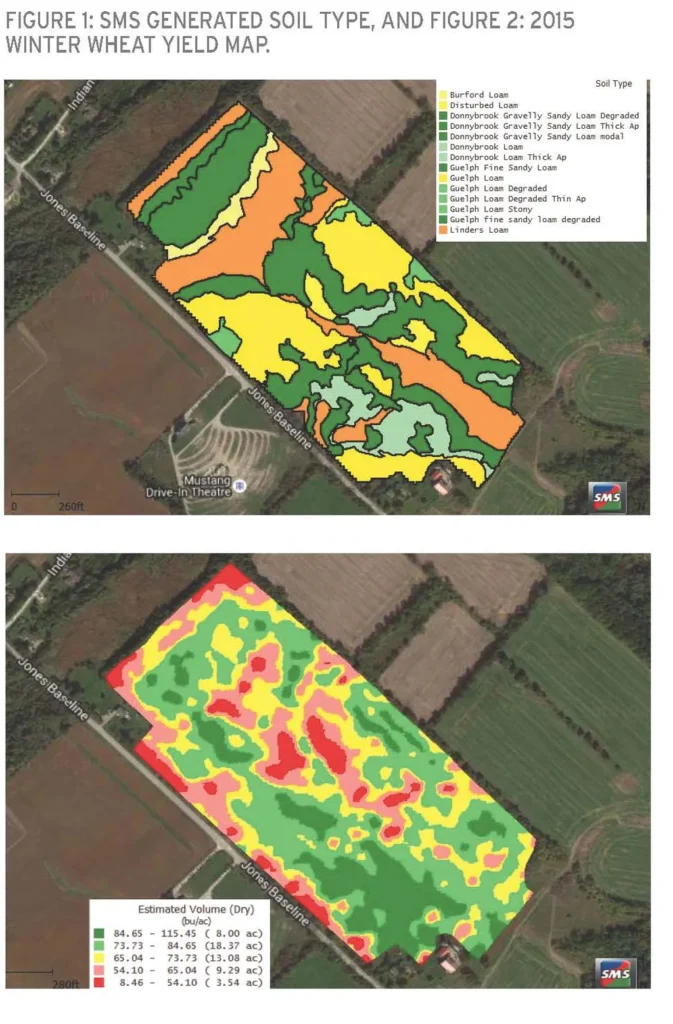In the heart of Ontario, Canada, a groundbreaking study led by Solmaz Fathololoumi from the School of Environmental Sciences at the University of Guelph is revolutionizing how we map and understand ephemeral gullies (EGs), a critical factor in soil erosion and agricultural productivity. Published in the journal ‘Land’ (translated from German as ‘Land’), this research offers a novel upscaling-based strategy that could significantly enhance precision agriculture and environmental management practices.
Ephemeral gullies are small, often temporary, channels of erosion that can significantly impact soil health and agricultural yields. Accurate mapping of these gullies is crucial for implementing effective soil conservation strategies. Fathololoumi’s study leverages high-resolution Pléiades Neo (0.6 m) and medium-resolution Sentinel-2 (10 m) satellite imagery, combined with ground-truth data from the Niagara Region, to refine the predictive mapping of EGs.
The research employs a sophisticated approach using spectral feature maps derived from Blue, Green, Red, and Near-infrared spectral bands, along with indices that indicate surface wetness, vegetation, color, and soil texture. The Random Forest (RF) algorithm is utilized to execute three distinct strategies for EGs identification. The first strategy involves direct calibration using Sentinel-2 spectral features for 10 m resolution mapping. The second strategy uses high-resolution Pléiades Neo data for model calibration, enabling EGs mapping at resolutions of 0.6, 2, 4, 6, and 8 m. The third, or upscaling strategy, applies the high-resolution calibrated model to medium-resolution Sentinel-2 imagery, producing 10 m resolution EGs maps.
The accuracy of these maps was evaluated against actual data, revealing that the upscaling strategy significantly improved the accuracy of EGs identification in medium spatial resolution scenarios. “The upscaling strategy not only enhances the accuracy of EGs mapping but also provides a scalable and accessible approach to soil conservation and sustainable land management,” Fathololoumi explained.
The study’s findings highlight the Variable Importance Measure (VIM) of different spectral features in EGs identification, with normalized near-infrared (Norm NIR) and normalized red reflectance (Norm Red) exhibiting the highest and lowest VIM, respectively. Vegetation-related indices demonstrated a higher VIM compared to surface wetness indices. The overall classification error of the upscaling strategy at various spatial resolutions was found to be lower than that of the direct Sentinel-2 model, indicating a significant improvement in identification accuracy.
This research has profound implications for the agricultural and environmental sectors. By providing a more accurate and scalable method for mapping ephemeral gullies, farmers and land managers can better implement soil conservation practices, leading to improved agricultural productivity and sustainability. “This study not only advances the methodology for EGs mapping but also contributes to the broader field of precision agriculture and environmental management,” Fathololoumi added.
The commercial impacts of this research are substantial. Accurate mapping of ephemeral gullies can help in the efficient allocation of resources for soil conservation, reducing the costs associated with soil erosion and improving crop yields. This, in turn, can enhance food security and support sustainable agricultural practices.
As we look to the future, the methodology developed by Fathololoumi and her team could shape the way we approach soil conservation and land management. By integrating high-resolution satellite imagery with advanced algorithms, we can achieve more precise and effective environmental monitoring, paving the way for a more sustainable and productive agricultural sector. This research is a testament to the power of innovation in addressing critical challenges in agriculture and environmental stewardship.

